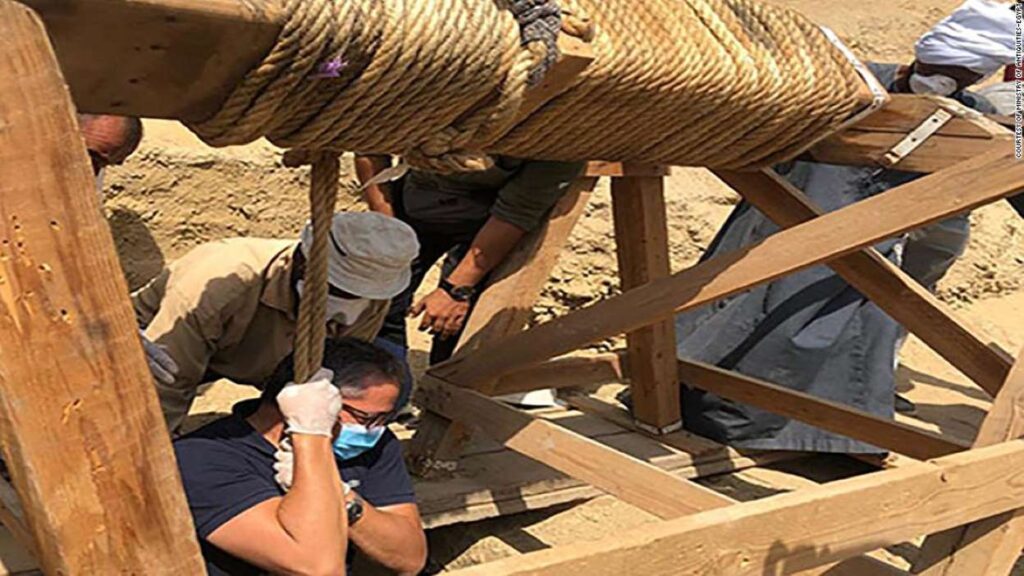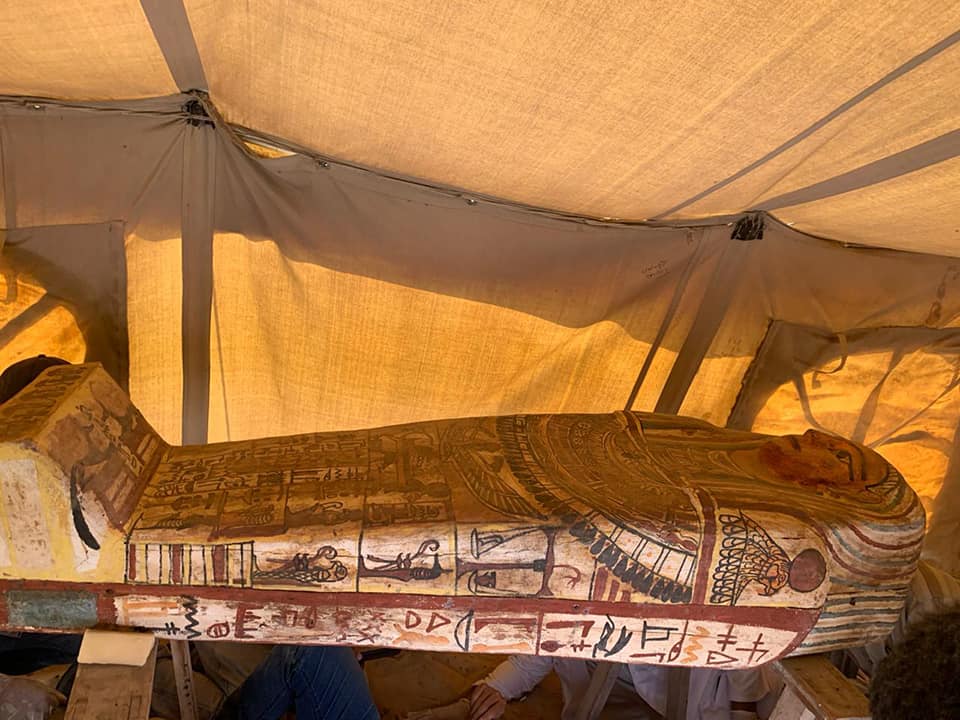14 Fully Intact and Sealed Coffins Discovered after 2,500 Years in Egypt’s Saqqara
Archaeologists in Egypt have discovered almost 30 sarcophagi believed to have been buried for around 2,500 years, according to the country’s Ministry of Tourism and Antiquities.
The cache of closed coffins was unearthed from an 11-meter-deep (36 feet) burial shaft in Saqqara, a vast necropolis about 32 kilometers (20 miles) south of Cairo.
Having announced the discovery of over a dozen sarcophagi at the site earlier this month, the ministry revealed via Facebook on Sunday that it had unearthed a further 14, raising the total number found in the shaft to 27.

Despite staying underground for millennia, the coffins have retained some of their original colors. Archaeologists also uncovered a collection of smaller artifacts at the site, according to a ministry statement.
Prior to Sunday’s announcement, Egypt’s Tourism and Antiquities Minister Khaled El-Enany had already described discoveries at the site as being “the largest number of coffins in one burial since the discovery of the Al-Asasif cachette,” referring to the 2019 discovery of 30 coffins, with mummies inside, that authorities then called Egypt’s largest find in over a century.
In a press statement, El-Enany also thanked the excavation workers for operating in difficult conditions while adhering to new coronavirus-related safety measures. “(It’s a) very exciting discovery,” he said in a video released by the ministry. “I think it’s only the beginning.”
Totally sealed
All 27 of the sarcophagi unearthed from Saqqara appear to be completely sealed, with initial studies suggesting that they haven’t been opened since they were first buried, the ministry said. Authorities also suggested that more coffins and artifacts were likely buried in the same location.

It is unclear how many more sarcophagi may be found in the shaft, or whose remains they contain, though archaeologists hope to provide further answers during the excavation process, said Mustafa Waziri, the secretary-general of Egypt’s Supreme Council of Antiquities.
The discovery follows a number of other significant finds at the Saqqara necropolis site in recent months. In April, archaeologists discovered five limestone sarcophagi and four wooden coffins containing human mummies.
That burial shaft, which stretched 9 meters (30 feet) below ground, was found to contain an array of small artifacts, including figurines that were typically buried in Egyptian graves to aid the deceased in the afterlife.
Also found in the tomb was a small wooden obelisk, about 40 centimeters tall, that had been painted with depictions of the Egyptian goddesses Isis and Nephthys, and the god Horus, one of the most renowned ancient Egyptian deities.
In December 2018, archaeologists found a private tomb belonging to a royal purification priest that dates back more than 4,000 years, according to the Ministry of Antiquities. A month before that, archaeologists found a mass cat cemetery and a collection of rare mummified scarab beetles.





